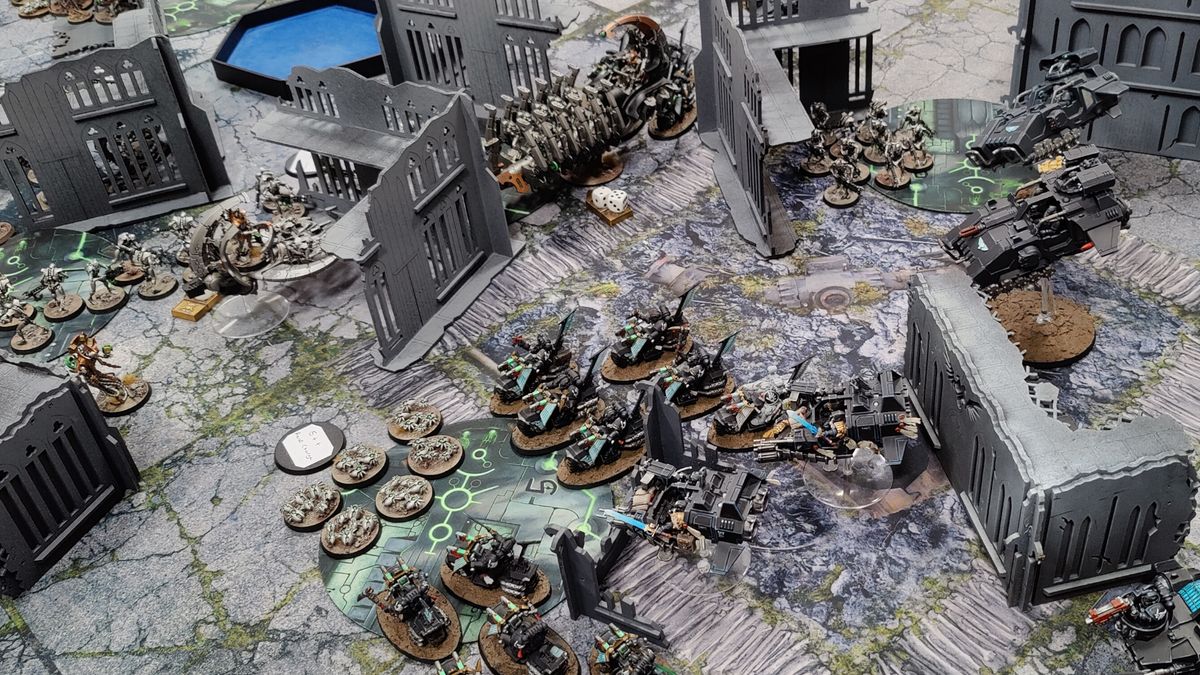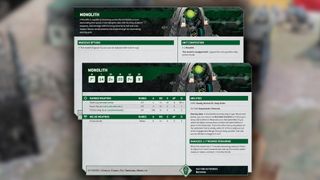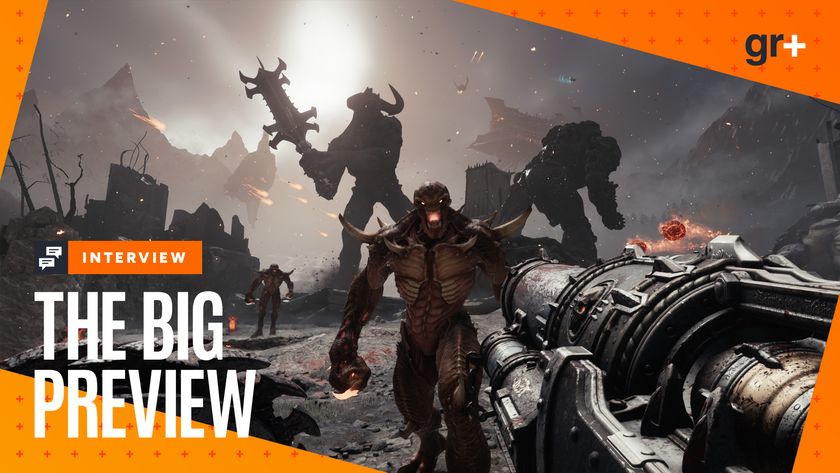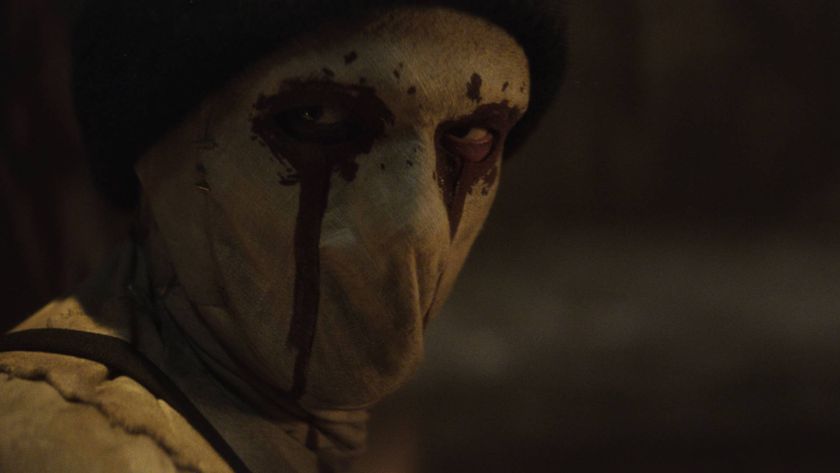Warhammer 40K 10th Edition first impressions: streamlined and a bit unbalanced, but a ton of fun
Opinion | The latest edition of Warhammer 40K is a ton of fun... if you can look past some early balance issues

Warhammer 40K 10th Edition is finally here, and uncharacteristically for publisher Games Workshop, the entire rule set (along with every army index) is available for free online. That means you can go hands-on with the revamp ahead of release regardless of whether you were able to secure a copy of the launch boxset, Leviathan, or not. This is exactly what I did, and it demonstrated how much there is to be excited about - along with what could use improvement.
I’ve had a chance to play six games using these updated rules over the last week, so let’s go over the good, the bad, and the ugly of Warhammer 40K 10th Edition.
Combo breaker

At its core, 10th Edition still feels quite similar to 9th. Players take turns moving, shooting, and fighting with their units as per usual, and a lot of the mechanics have carried over from the previous version. For example, you’re still rolling standard dice (D6), checking against stats, and blowing models off the table, while also trying to complete specific objectives. Games Workshop’s mantra for 10th Edition is "simplified, not simple", which is their very-marketing way of saying they’ve cut down on a lot of the bloated rules (something some of the best board games could do with, to be honest).
This is most evident with the new unit datacards. Instead of an army rule book (aka a Codex), each faction has been given a set of datacards, with the theory being that almost every rule that unit has is on the datacard itself. Previous editions had seen army rules spread across the Codex, and even multiple books as supplementary rules came out. Now you simply look at one card and you're good to go - everything you need is there.
The game definitely feels easier to get your head around, with fewer rules to remember and fewer combos to worry about
It’s a fantastic system that really does speed the game up. You build a list, bring the cards along for the units in your army, and just check the card when that unit is doing something. This kind of quickfire accessibility is reminiscent of many board games for adults, and that's no a bad thing. More time spent playing the game instead of poring over a rulebook is always welcome.
It’s also great for learning your opponent's army, too - you can just ask to see their card and neither player has to spend ages flicking through a book trying to find the right page.
It’s not just the unit abilities that have been simplified. 9th Edition was a nightmare of extra rules by the end, with most factions having access to 30 - 40 stratagems (extra abilities you can trigger at the cost of command points), sub-faction rules, extra-special detachments, etc. All of that is gone in favour of the new detachment system. With this, your faction’s rules fit on two pages and each detachment only has six stratagems, so there is a lot less to remember for every army.
Sign up to the 12DOVE Newsletter
Weekly digests, tales from the communities you love, and more

The other big change is with how missions are generated and, again, cards play a big part here. The Leviathan Mission Pack contains cards for deployment maps, primary missions, and extra mission rules, letting you randomly generate your game by drawing one of each. One of the biggest flaws of 9th edition was how samey and generic the missions felt, so being able to randomise every aspect and still have a (relatively) balanced game is an impressive feat. You can also choose between two different types of secondary missions in your games too - fixed and tactical. Both have their pros and cons, and learning to build your lists around each style of play is going to add a lot of tactical depth to the game.
Balancing act

It’s not all sunshine and roses though. Warhammer 10th Edition is a full reset of the rules, and such a massive undertaking inevitably comes with mistakes and balance issues. At the moment, there are a couple of problem factions on the top and bottom ends of the bell curve. Namely, Aeldari, Thousand Sons, and Imperial Knights are all too strong (Aeldari especially, thanks to some unforeseen interactions between their Fate Dice mechanic and their iconic D-weapons).
On the flip side, a few factions feel very underpowered, namely Death Guard and the Adeptus Mechanicus. These teething problems will hopefully be ironed out in the next few months as Games Workshop (GW) releases balance updates. They’ve already done a couple of hotfixes, so they’ve shown willingness to get stuck in there and clean up issues when needed. Until then, just avoid bringing any abusive combos to your friendly games and everyone will have a great time.
Some of the most fun I’ve had rolling dice in a long time
For my part, I play everyone’s favorite grumpy old robots, the Necrons, and their index is fairly fantastic. This army is on the top end of the balance curve, but not quite breaching into 'overpowered' thanks to some defined weaknesses - we're slow, and we lack indirect fire options (aka artillery). I had two close losses to Thousand Sons and Chaos Knights, and four wins against Space Marines, Drukhari, Aeldari (toned down to avoid the abusive combos), and Genestealer Cults.
While these victories felt great, 10th Edition's streamlined nature was equally satisfying. The game definitely feels easier to get your head around, with fewer rules to remember and fewer combos to worry about. At the same time, there is a lot more opportunity for interaction during your opponent's turn. The 'overwatch' mechanic has been reworked to let you shoot one of your units in your opponent's movement phase, as well as in the charge phase, letting you threaten them during their turn, so both players have things to think about at all times.

After quite a stagnant period of 40K towards the end of the last edition, 10th really feels like a breath of fresh air for the game, and my competitive games against other strong armies were some of the most fun I’ve had rolling dice in a long time. At the same time, the blowouts against weaker factions felt bad for both me and my opponents - stomping Drukhari should be fun because I outplayed the bondage elves, not because I have better rules than them. Hopefully GW addresses this quickly and brings a semblance of balance to the game, because right now it’s the only thing holding it back.
"Simplified, not simple" is an obvious buzz phrase but, by and large, 10th Edition holds up to those principles. There are some rules that need tweaking and excessive combos between keywords which should be addressed, but once they’re fixed, Warhammer 40,000 10th Edition is on track to be the best iteration of the grimdark wargame yet.
Want to get your models on the table as quickly as possible? Check out the easiest Warhammer 40,000 armies to paint. As for other tabletop recommendations, don't miss these board games for adults or these essential board games for 2 players.

Ian Stokes is an experienced writer and journalist. You'll see his words on 12DOVE from time to time, and he works as Entertainment Editor at our sister site Space.com.












